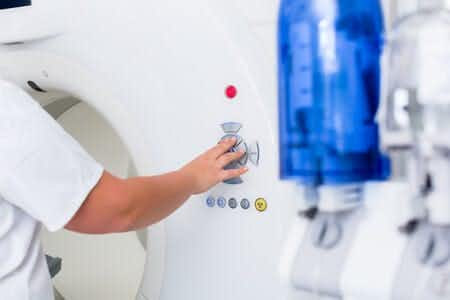This case involves a sixty-two-year-old female patient who underwent a total abdominal hysterectomy along with the removal of her right Fallopian tube several years ago. The patient was involved in a motor vehicle accident and presented to the emergency room with lower left-sided back pain, with pressure and burning upon urination. The patient had a CT of the abdomen performed that showed a large mutiloculated structure in the pelvis compressing the bladder. The working diagnosis by the radiologist was a peritoneal inclusion cyst and a secondary diagnosis of less likelihood was a left ovarian cyst neoplasm. A pelvic MRI was performed for further investigation which revealed a left-sided mass suspicious for carcinoma. The patient underwent an exploratory laparotomy and the surgeon focused his area of resection on the right side of the abdomen when the preoperative plan was the left-sided mass. Additionally, during this procedure, the patient sustained serosal tears of the small intestine and large bowel as a result of inadequate surgical technique.
Question(s) For Expert Witness
1. What are your thoughts on the events that transpired during this procedure?
Expert Witness Response
In women who present with GI carcinomatosis, but without an obvious pelvic mass, an extensive search often fails to identify a primary tumor. These patients can be presumed to have ovarian carcinoma or primary peritoneal carcinoma and treated with cytoreductive surgery followed by platinum-based chemotherapy. Surgery is the initial treatment of choice, provided patients are medically fit. Patients who are not fit for surgery may be given chemotherapy and considered for surgery later. The aim of surgery is to confirm the diagnosis, define the extent of disease, and resect all visible tumor. The role of cyto-reduction was demonstrated by Griffiths in 1975 and has been confirmed by many others. A retrospective analysis from Lin et al found that epidural anesthesia and analgesia for ovarian serous adenocarcinoma surgery was associated with reduced mortality during the initial years of follow-up.
About the author
Michael Talve, CEO
Michael Talve stands at the forefront of legal innovation as the CEO and Managing Director of Expert Institute. Under his leadership, the Expert Institute has established itself as a vital player in the legal technology arena, revolutionizing how lawyers connect with world-class experts and access advanced legal technology. Michael's role involves not only steering the company's strategic direction but also ensuring the delivery of unparalleled intelligence and cutting-edge solutions to legal professionals. His work at Expert Institute has been instrumental in enhancing the capabilities of attorneys in case preparation and execution, making a significant impact on the legal industry's approach to expert consultation and technological integration. Michael's vision and execution have positioned the Expert Institute as a key facilitator in the intersection of law and technology.



